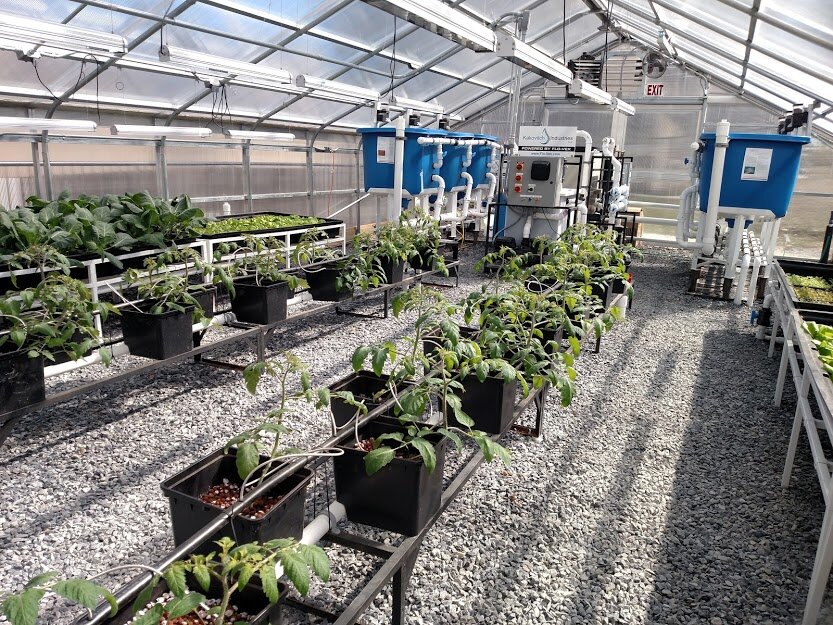Coronavirus Shows the Importance of Local, Efficient Agriculture
 By Brian FilipowichThe coronavirus outbreak is already disrupting international travel and trade. The pandemic could impact the global food supply chain and leave some populations without adequate nutrition.This pandemic shows that we need to invest in local agriculture to boost our supply of local, reliable food. Aquaponics, hydroponics, and controlled-environment agriculture can produce large amounts of food with minimal space and resources. These water-based growing methods do not require soil and can be practiced from arid deserts to urban rooftops.Hidden Cost of the Global Food Supply ChainOur modern food system involves long travel distances and several steps along the supply chain. The average head of lettuce in the U.S. travels approximately 1,500 miles. Over 90% of our seafood is imported.The coronavirus is exposing one major hidden cost of our global system: it is at risk from disruptions like pandemics, extreme weather events, military events, and economic or political upheavals. As the climate changes, these extreme events are more likely.How does this hidden cost of the global food supply chain manifest itself?An american consumer can find similar prices for a tomato grown 100 miles away and a tomato grown in another country 2,000 miles away. But during a global travel ban or category 5 hurricane, your local tomato will still be there. How do we account for this benefit during the good times, so that there are enough local growers to support us during possible disruptions?Aquaponics, Hydroponics, and Controlled-Environment AgricultureThe problem is that with a changing climate, water shortages, and growing population, there is less land to grow for more people. Deserts, freezing climates, and urban areas do not have the arable soil to grow a meaningful amount of their own food to achieve food security.Aquaponics is a food production method integrating fish and plants in a closed, soil-less system. This symbiotic relationship mimics the biological cycles found in nature. Benefits include dramatically less water use; no toxic chemical fertilizers or pesticides; and no agriculture discharge to air, water or soil.Hydroponics is the practice of growing plants in water-based systems with externally supplied nutrients.Controlled-Environment Agriculture (CEA) is the practice of raising crops in a protected, optimal environment like a greenhouse.These growing methods maximize the amount of crops that can be produced per square area per year. Plants can be grown densely and quickly because conditions are ideal and roots are delivered exactly what they need. And controlled-environments allow for year-round production.Aquaponics brings the added benefit of fish - an efficient supply of animal protein. It takes 30 pounds of feed to produce a one-pound steak, only 2 pounds for a one-pound tilapia filet. Fish can be grown densely and indoors, compared to the large operations required for beef, pork, and poultry.Economies across the globe must find ways to value the hidden benefits of local, efficient agriculture to encourage more local growing. There will always be another coronavirus-type event, let's make sure we have a reliable supply of local food for it.[ninja_form id='33']
By Brian FilipowichThe coronavirus outbreak is already disrupting international travel and trade. The pandemic could impact the global food supply chain and leave some populations without adequate nutrition.This pandemic shows that we need to invest in local agriculture to boost our supply of local, reliable food. Aquaponics, hydroponics, and controlled-environment agriculture can produce large amounts of food with minimal space and resources. These water-based growing methods do not require soil and can be practiced from arid deserts to urban rooftops.Hidden Cost of the Global Food Supply ChainOur modern food system involves long travel distances and several steps along the supply chain. The average head of lettuce in the U.S. travels approximately 1,500 miles. Over 90% of our seafood is imported.The coronavirus is exposing one major hidden cost of our global system: it is at risk from disruptions like pandemics, extreme weather events, military events, and economic or political upheavals. As the climate changes, these extreme events are more likely.How does this hidden cost of the global food supply chain manifest itself?An american consumer can find similar prices for a tomato grown 100 miles away and a tomato grown in another country 2,000 miles away. But during a global travel ban or category 5 hurricane, your local tomato will still be there. How do we account for this benefit during the good times, so that there are enough local growers to support us during possible disruptions?Aquaponics, Hydroponics, and Controlled-Environment AgricultureThe problem is that with a changing climate, water shortages, and growing population, there is less land to grow for more people. Deserts, freezing climates, and urban areas do not have the arable soil to grow a meaningful amount of their own food to achieve food security.Aquaponics is a food production method integrating fish and plants in a closed, soil-less system. This symbiotic relationship mimics the biological cycles found in nature. Benefits include dramatically less water use; no toxic chemical fertilizers or pesticides; and no agriculture discharge to air, water or soil.Hydroponics is the practice of growing plants in water-based systems with externally supplied nutrients.Controlled-Environment Agriculture (CEA) is the practice of raising crops in a protected, optimal environment like a greenhouse.These growing methods maximize the amount of crops that can be produced per square area per year. Plants can be grown densely and quickly because conditions are ideal and roots are delivered exactly what they need. And controlled-environments allow for year-round production.Aquaponics brings the added benefit of fish - an efficient supply of animal protein. It takes 30 pounds of feed to produce a one-pound steak, only 2 pounds for a one-pound tilapia filet. Fish can be grown densely and indoors, compared to the large operations required for beef, pork, and poultry.Economies across the globe must find ways to value the hidden benefits of local, efficient agriculture to encourage more local growing. There will always be another coronavirus-type event, let's make sure we have a reliable supply of local food for it.[ninja_form id='33']
